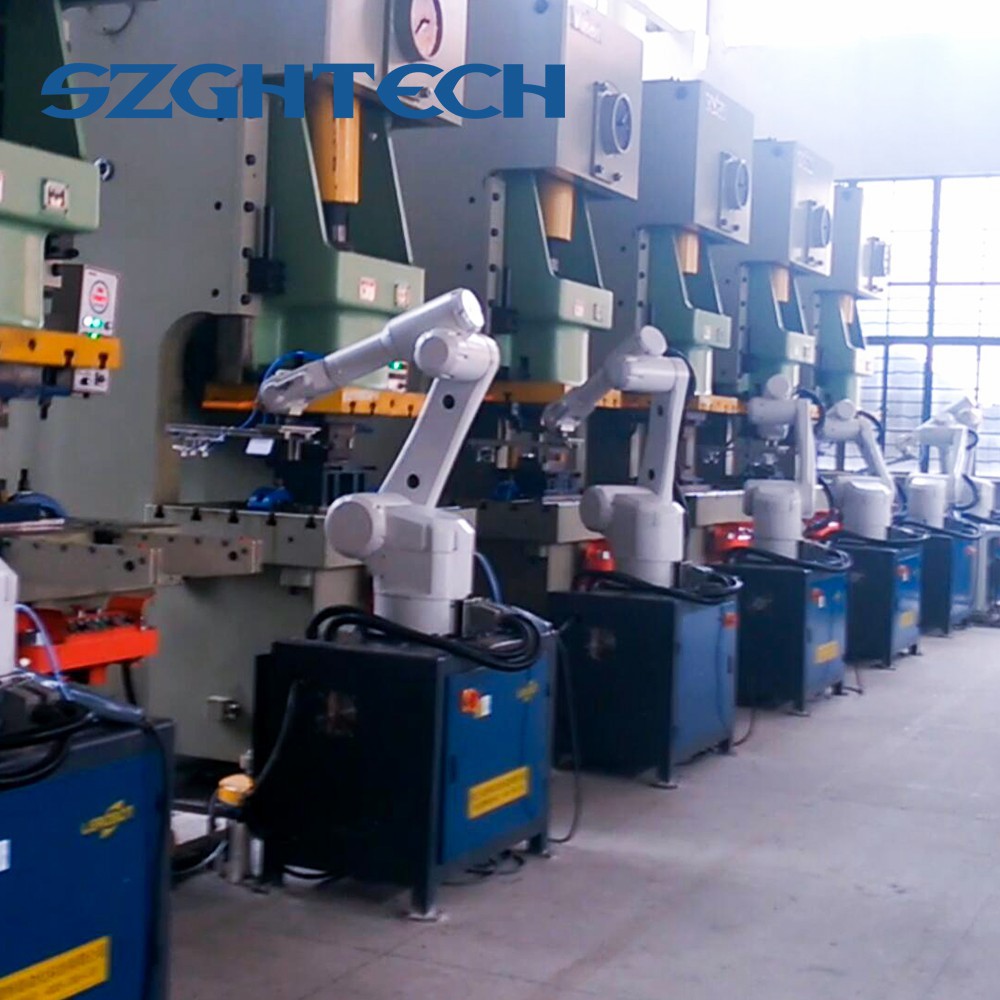Industrial robotic arms achieve high-precision operation through various mechanisms and technologies, including:
1) Robotic arm design: Industrial robotic arms are designed with high rigidity and stiffness to minimize deflection and maintain stability during operation. They are usually made of materials such as steel or aluminum and are designed with lightweight structures to reduce inertia and improve dynamic performance.
2) Servo motors and sensors: Industrial robotic arms are equipped with high-precision servo motors that provide accurate positioning and motion control. These motors are usually driven by feedback from sensors, such as encoders or resolvers, that provide real-time position and velocity feedback to the control system, enabling precise control of the robot's movements.
3) Control algorithms: Industrial robotic arms use advanced control algorithms to ensure precise motion control. These algorithms take into account factors such as inertia, friction, and external forces to calculate optimal trajectories and control the motor movements with high accuracy.
4) End-effectors and tooling: Industrial robotic arms are typically equipped with specialized end-effectors and tooling that are designed for specific tasks, such as gripping, cutting, welding, or measuring. These end-effectors and tooling are designed with high-precision components, such as sensors or cameras, to ensure accurate operation.
5) Vision and sensing systems: Industrial robotic arms can be equipped with vision and sensing systems, such as cameras, 3D scanners, or force sensors, that provide feedback and information about the surrounding environment and the workpiece. This enables the robot to adapt its movements and apply precise forces based on real-time feedback from the sensors.
6) Calibration and calibration routines: Industrial robotic arms require regular calibration to maintain high precision. Calibration routines are performed to ensure accurate alignment of the robot's joints and axes, as well as the accurate measurement of the workpiece's position and orientation. This helps to minimize errors and ensure high-precision operation.
7) Error compensation techniques: Industrial robotic arms can use error compensation techniques, such as kinematic and dynamic compensation, to reduce errors in positioning and motion caused by factors such as joint clearances, backlash, or external forces. These techniques can help improve the overall accuracy and repeatability of the robot's operation.

The combination of precise mechanical design, high-precision motors, advanced control algorithms, specialized end-effectors, vision and sensing systems, calibration routines, and error compensation techniques enables industrial robotic arms to achieve high-precision operation in various industrial applications.

